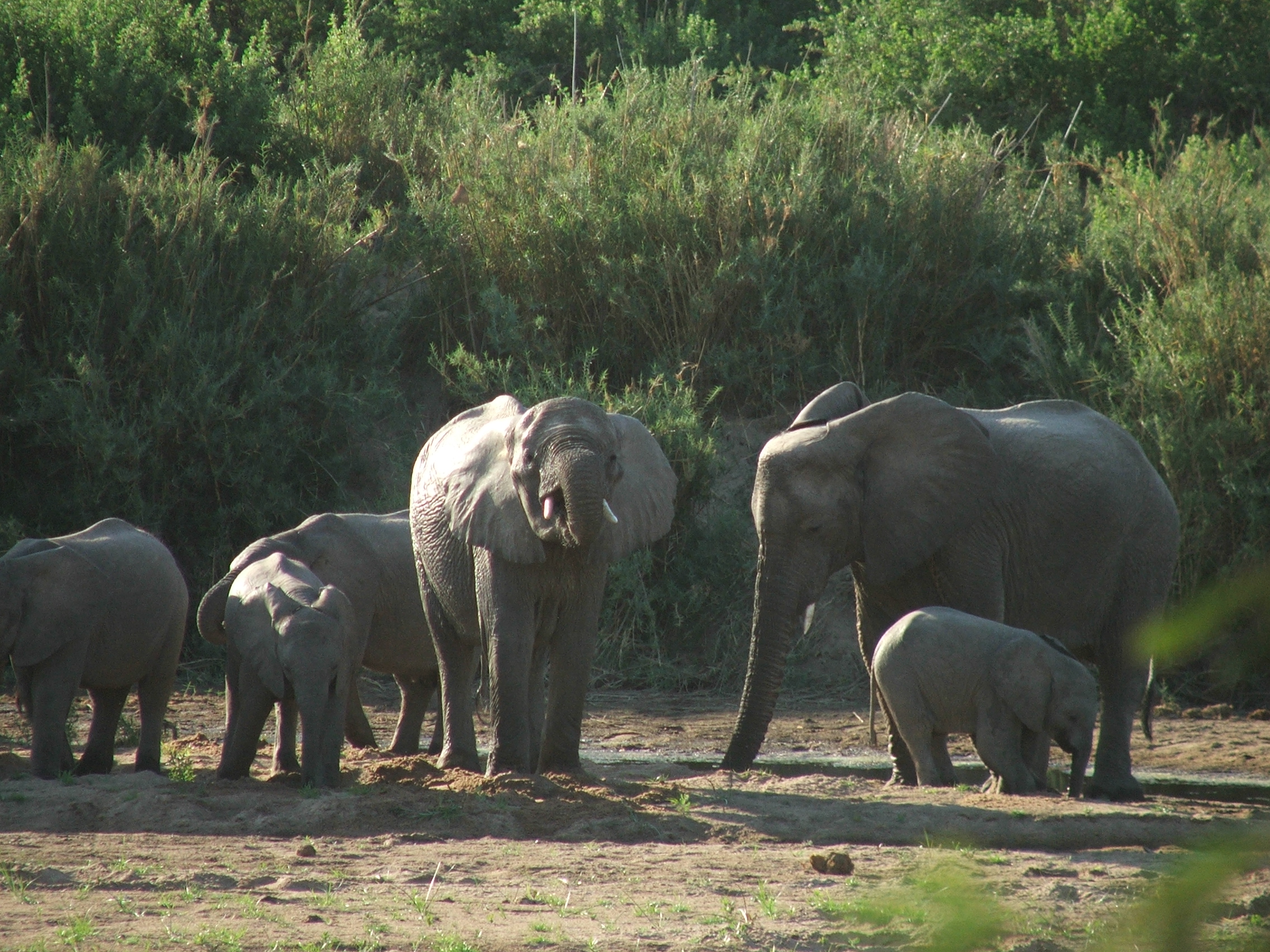By Nick Houtman
Last August, as part of the Oregon State University Marine Studies Initiative, Gil Sylvia called a meeting of OSU faculty and staff with an interest in aquaculture. He was pleasantly surprised when 30 people showed up in Corvallis on a summer day.
“They were all positive about advancing aquaculture at OSU and the need for some kind of coordination and collaboration,” says Sylvia, emeritus professor and former director of the Coastal Oregon Marine Experiment Station in Newport. “There’s a sense of rediscovery of the field in states like Oregon and that the industry can be managed sustainably. That’s opened up more support in the nation and the state. It’s kind of a new age for aquaculture.”
Some of that stimulus comes from federal agencies. The U.S. Department of Commerce ranks aquaculture among its top priorities for reducing the nation’s trade deficit. In 2017, the United States imported $16 billion more in seafood than it exported, with a majority of imports coming from aquaculture. Fish products account for the No. 1 food-related trade imbalance.
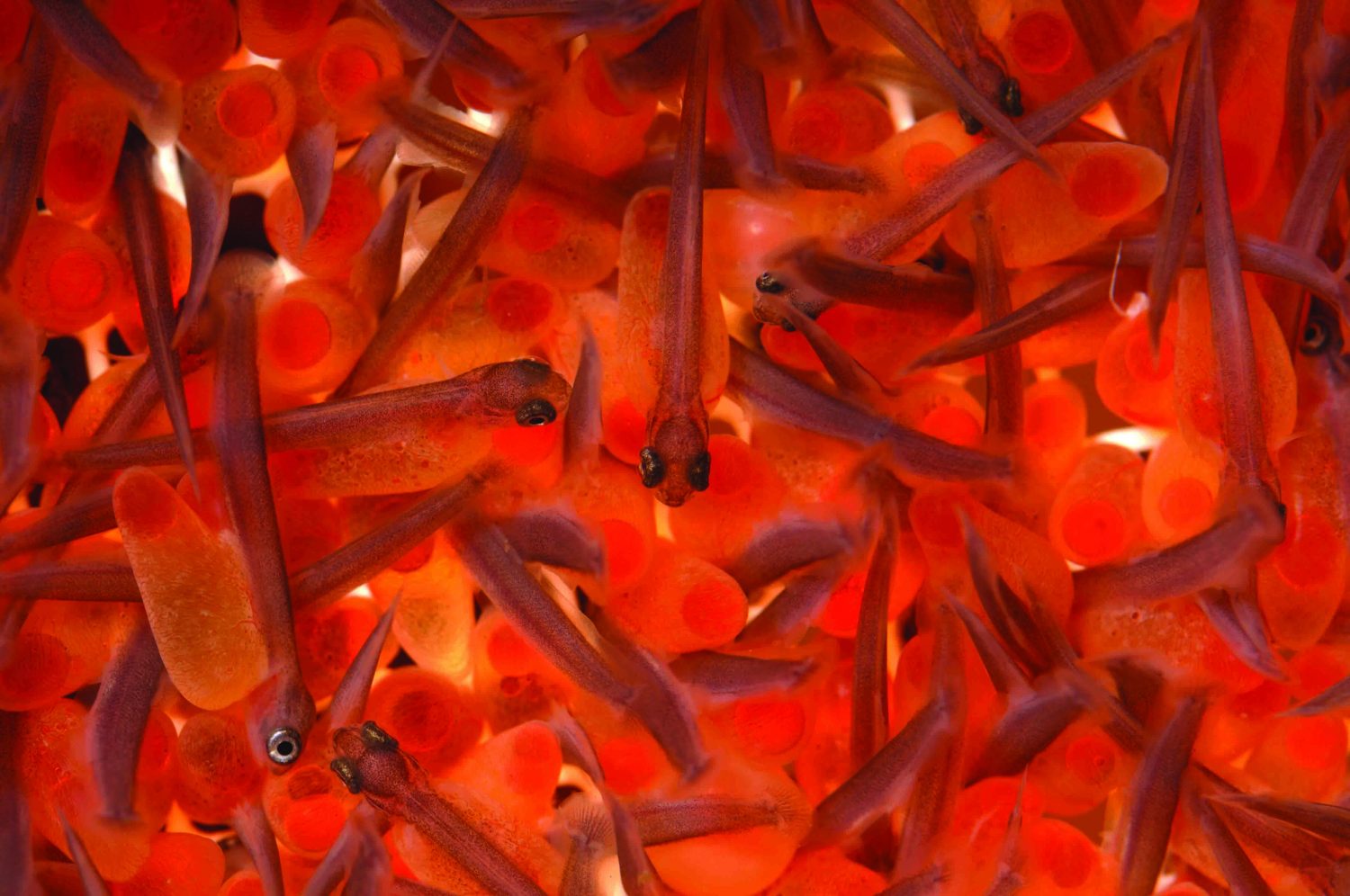
The U.S. Department of Agriculture defines aquaculture as “the farming of aquatic organisms, including baitfish, crustaceans, food fish, mollusks, ornamental fish, sport or game fish and other aquaculture products.” At OSU, the field encompasses research in salmon, steelhead, seaweed, oysters and other organisms. Partners include agencies and businesses with a stake in a diverse, sustainable industry.
OSU’s new aquaculture initiative is not its first. In the early 1970s, researchers supported by Extension and the young Oregon Sea Grant program were actively exploring production techniques for salmon and oysters.
In 1977, two Congressional subcommittees held a hearing on aquaculture at the Hatfield Marine Science Center (HMSC) in Newport. They were gathering input on legislation to nurture a national aquaculture industry. Oregon Congressman and subcommittee member Les AuCoin welcomed his colleagues to the state and positioned Oregon as a national leader in the field. He noted the importance of the commercial fishing industry and the ongoing development of salmon hatcheries and trout and oyster farms.
He also cited the success of an Oregon Sea Grant-sponsored chum salmon research project on Netarts Bay. After releasing young salmon into the estuary, scientists had documented the return of several thousand adult fish. The promising potential of “salmon ranching” — putting fish out to graze in ocean pastures rather than growing them in cages — led to the opening of OR Aqua-Foods on the south shore of Yaquina Bay. Jack Donaldson, an OSU professor of fisheries, and his father, Lauren Donaldson of the University of Washington, co-founded the company. By the time of the hearing, OR Aqua-Foods had been purchased by the Weyerhaeuser corporation.
A mild climate and clean water favor the growth of aquaculture in Oregon, AuCoin added, but he credited the hard work of people in research and business for establishing an “infant industry” with significant economic opportunities for rural communities. While OR Aqua-Foods eventually folded, Oregon continued to experiment with methods for raising salmon for release into the wild.
AuCoin and other committee members noted that Americans were eating more seafood per capita every year. Coupled with concerns over flat or declining harvests of wild fish, they said, rising demand was leading economists to predict a shortage of fish products within the next decade.
“The time has come, Mr. Chairman, to recognize that agriculture alone will not meet our country’s food needs indefinitely, and that it cannot solve the problems of world hunger. The time has come to begin serious national efforts to farm the sea,” said AuCoin. Subcommittee chair Robert Leggett of California added, “Washington and Oregon are expected to play a prominent role in the expansion of U.S. aquaculture.”

Small Player
More than 50 years later, that promise has barely materialized in Oregon. According to the 2018 Census of Aquaculture, published by the U.S. Department of Agriculture, the state ranked 17th in the nation with annual sales just over $23 million, largely a result of oyster production. About two-thirds of the state’s roughly 50 aquaculture businesses are located in Tillamook County and the Portland metro area.
“Oregon is a small player in the growing field of cultivating fish in both ocean and freshwater,” The Portland Business Journal noted in 2015. Meanwhile, Washington was the nation’s second largest producer with sales of more than $207 million.
In the 1980s, OSU had seven or eight aquaculture faculty researchers at the HMSC, but by 2018, only one remained, says Sylvia. Over the last three decades, under the leadership of Hillary Egna in the College of Agricultural Sciences, OSU has coordinated an aquaculture training program for people in rural communities. However, funded by the U.S. Agency for International Development, the Aquafish Innovation Lab focused its efforts in Asia, Africa and Latin America, not in the U.S.
HMSC director Bob Cowen points out that OSU is well-positioned to address local, state and national needs in aquaculture. “If we want to be serious players in this field, we need to bring all of our assets together in a coordinated way now. Our researchers are working on science, technology and policy that pertain to rearing, maintaining and marketing aquatic animals (see a list of OSU programs). And the facilities at the Hatfield Marine Science Center are among the best in the nation.
“We should be doing research on all aspects of aquaculture and then sharing the results with potential users wherever they happen to be.”
Success with Shellfish
In his office at the HMSC, Chris Langdon reminds a reporter that he is sitting in the Newport Aquaculture Laboratory. Built after the passage of the National Aquaculture Act of 1980, the lab features a flowing seawater system that pipes water from Yaquina Bay into dozens of tanks — nurseries for fish, shellfish, seaweed and other marine organisms. These facilities are home to the Molluscan Broodstock Program (MBP), a two-decades-long breeding effort that has succeeded in dramatically raising the productivity of West Coast oyster farming.
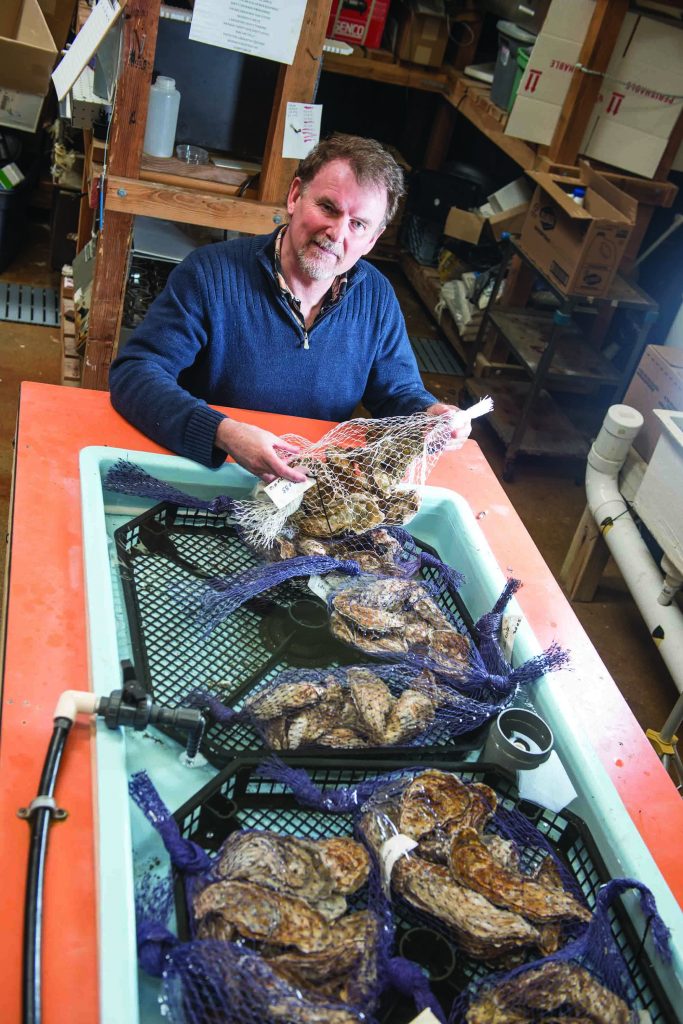
“We get about 15% to 30% better yield with MBP stocks (compared to wild oysters), which translates into about $7 to $11 million a year in production,” says Langdon, who directs the program. “That’s a great return on investment.” Over the past 22 years, the program has received about $3.5 million in research funding.
Langdon and his team maintain carefully selected lines of Pacific oysters (Crassostrea gigas) reflecting a diversity of local West Coast populations. They breed for high rates of settlement (to survive, oyster larvae need to successfully settle on a substrate) and growth, but researchers have also shown that MBP strains are more resilient in the face of a pervasive environmental threat: ocean acidification.
In 2007, a catastrophic die-off of oyster larvae at the Whiskey Creek oyster hatchery on Netarts Bay sent shock waves through the industry. Researchers initially thought bacterial pathogens were responsible, but further work pointed to increasingly acidic ocean water. Langdon worked with OSU colleagues George Waldbusser and Burke Hales and with Alan Barton, the Whiskey Creek manager who discovered the cause of the die-off. “We’ve found that early larval stages are very sensitive to acidification,” says Langdon.
To control acidity in oyster hatcheries, Hales developed an automated system called the “Burkolater.” Many of the hatcheries on the West Coast now use them.
Meanwhile, in experiments at the Newport Aquaculture Lab, Langdon and his team showed that MBP oyster stocks outperformed wild stocks under acidified as well as normal conditions. “We get about 30 to 40% higher settlement with larvae from MBP stocks compared to wild stocks (under acidification) and about 50% higher set under ambient conditions,” says Langdon.
Acidification isn’t the only focus of oyster research work at the lab. Other studies are developing oyster strains resistant to a virus that has devastated populations in Europe and Australia and has recently shown up on the West Coast. Carla Schubiger in the OSU College of Veterinary Medicine leads a study of the use of probiotics to protect the health of developing oyster larvae. Both are supported through Oregon Sea Grant.
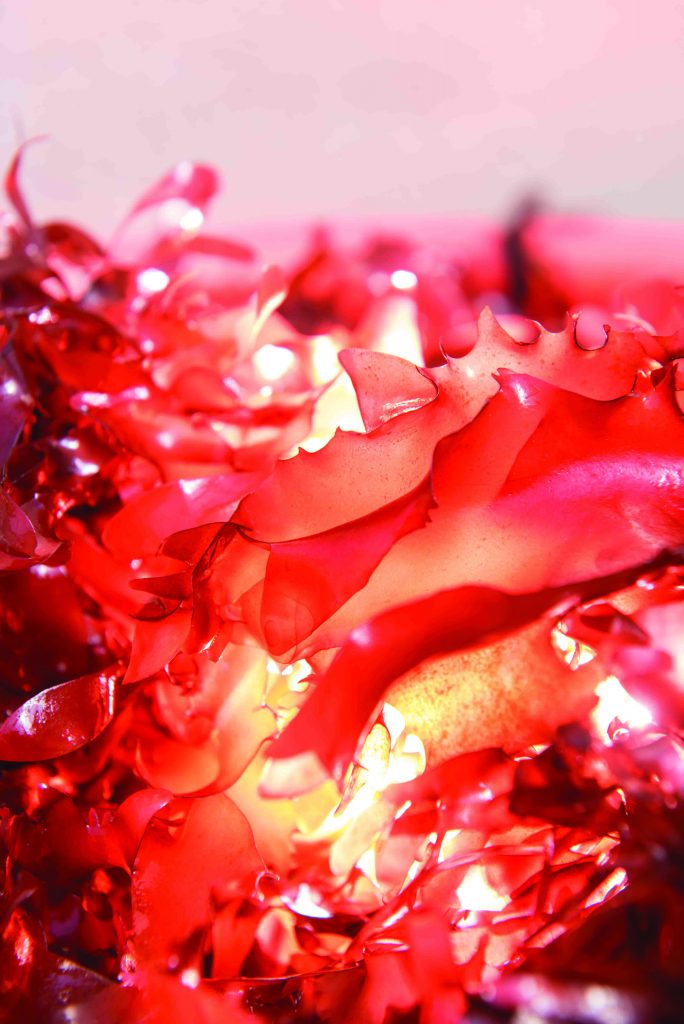
Pinot Noir of Seaweed
In 2015, OSU announced development of a patented strain of red seaweed called dulse (Palmaria mollis), which has a flavor reminiscent of bacon when properly cooked. With help from the Food Innovation Center, a collaboration between OSU and the Oregon Department of Agriculture in Portland, food scientists were testing it as an ingredient in a wide variety of foods including salad dressings, marinades, crackers and even ice cream.
Now, Chuck Toombs, a former Portland business owner and an instructor in the Oregon State University College of Business, has founded a company, Oregon Dulse, to grow the patented dulse in tanks. At the ports of Bandon and Garibaldi, he pumps seawater ashore at high tide and stirs the growing plants with a flow of compressed air. He sells them as fresh sea vegetables to high-end restaurants.
A good model for his business, he says, is the Oregon wine industry. He calls his dulse “the pinot noir of seaweed.”
“We’re selling as much as we can grow. It’s significantly higher than a commodity item. I see no reason why that can’t expand,” says Toombs.
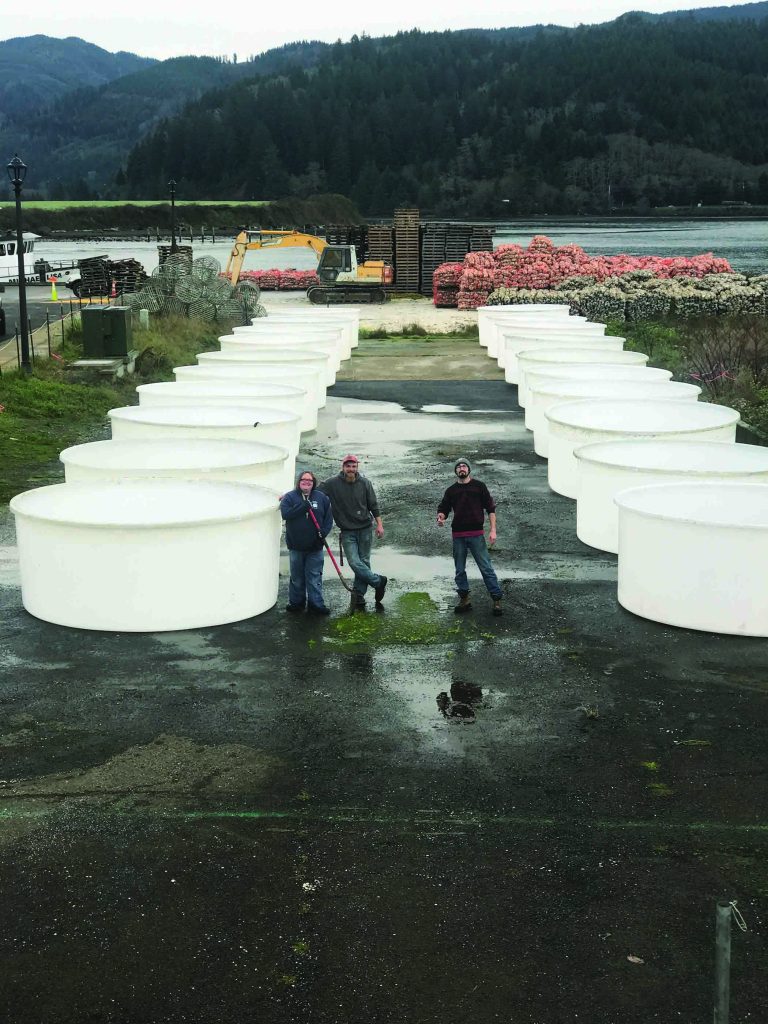
Among the advantages of dulse are its environmental attributes — it counters acidification by removing carbon dioxide from the water — and its nutritional properties: It is up to 16% protein by dry weight. And since the plant grows year-round and can be continuously harvested, it may be a sustainable source of high-quality protein for nutritional supplements and other food products.
Land-based crops max out at about four tons per acre by dry weight, says Toombs. Dulse produces as much as 15 tons per acre in the summer.
“There are a lot of people getting into the seaweed business who are evangelical. They want to save the world,” Toombs adds. “But it takes marketing, and that’s what we do. I want to create a commercial business that is profitable. It may just help save the world too.”
Local Development
About a half hour south of Bandon down U.S. Hwy. 101, another potential aquaculture venture is in the planning stages at Port Orford. Working with a company, Oregon Sea Farms, OSU’s Tom Calvanese is coordinating discussions that connect dulse with sea urchins, kelp, red abalone and a new economic development facility proposed by the Port of Port Orford.
The project aims to harvest sea urchins, whose populations have grown in the wake of a sea-star wasting disease that has decimated one of the urchins’ major predators. Urchins feed on kelp, and as urchins have expanded, kelp beds have shrunk.

Calvanese is affiliated with OSU’s Marine Studies Initiative as manager of the university’s Port Orford Field Station and serves as a commissioner of the Port of Port Orford.
“Port Orford is on the leading edge because of its location and the innovative thinking that goes on here,” says Calvanese. “People embrace ideas that might seem wacky on their face, but they figure out a way to make them work. You have a community of folks here who are willing to explore new ideas, such as the marketing of live fish.”
Oregon Sea Farms has harvested urchins and other coastal foods since 1993. It proposes to put the urchins in land-based tanks and feed them with dulse until they reach market quality. Japan buys the bulk of the global urchin supply for the animal’s roe, aka uni (a delicacy used in sushi), but worldwide production has been declining.
In addition to raising marketable urchins, says Calvanese, goals include the restoration of kelp beds and removal of competition for red abalone, on which the state maintains a fishing moratorium.
The port has received $2.1 million from the state of Oregon for the new facility, and this, along with funds from the Wild Rivers Coast Alliance and other philanthropies, will be used as a match for the planned $3 million grant from the U.S. Economic Development Administration. A flowing seawater system and laboratory space could be used to experiment with the urchin and other projects. “We talk about it as a seafood hub,” says Calvanese. “There will be room for live fish and crab, urchin and dulse culture, education and community engagement.”
Work Force Training
Tim Miller-Morgan sees Oregon aquaculture from a different perspective. As a veterinarian at the HMSC, he reviews OSU fish labs for compliance with state and federal animal health regulations. He has also overseen animal health studies for people who serve the tropical and ornamental fish trade. He has advised people who raise aquarium fish locally and in other countries, from India to Brazil.

“There are a lot of people raising fish for the aquarium market in Oregon, probably more than there are raising fish for food,” he says. Many of these operations are small and don’t show up in the USDA census. They sell locally, but some produce at a level that allows them to market tropical fish out of state.
In addition, Miller-Morgan plays a role that is critical for the aquaculture industry: He teaches in the Aquarium Science program at the Oregon Coast Community College in Newport. Students conduct their academic training on the OCCC campus near South Beach but have internship opportunities at the Oregon Coast Aquarium, the HMSC, the Oregon Hatchery Research Center near Alsea and other OSU research labs.
Unique in the United States for its seawater facilities and the breadth of its hands-on training, the program places most of its alumni in jobs within six months of graduation. Some work in public aquaria and others in state fish hatcheries and fish research facilities.
In his advisory capacity, Miller-Morgan sees an interaction between wild fisheries and aquaculture. For example, he has worked with people who harvest tropical fish for the aquarium trade along the Rio Negro, a major Amazon tributary in Brazil. When such fish are produced by aquaculture operations, prices drop and fishermen switch to other extractive industries such as gold mining or tree cutting.
“I see the benefit of a well-managed sustainable fishery as well as aquaculture,” he says. “I regard them both as tools in the toolbox (for community development).”
Natural Strengths
The future of Oregon’s aquaculture industry lies, in part, in the hands of a Klamath Falls native and OSU graduate who has spent most his professional life overseas. John Moehl spent six years in the Peace Corps in Africa and worked in Kenya and Nigeria before receiving degrees in rural sociology and aquaculture from Auburn University in 1993. As a senior aquaculture officer for the Food and Agriculture Organization of the United Nations, he advised governments and individuals across Africa on aquaculture and water resources for food production and community development. Today, Moehl lives in McMinnville and advises state government and the Oregon Aquaculture Association on building the state’s capacity for farming its waters.
“Aquaculture in Oregon will follow a similar trajectory as agriculture, because that’s what it is, where roughly 80% of the production comes from 20% of the producers,” he says. “So you’d have a few large producers producing the majority of the product and then a lot of small producers making up the rest of the harvest and addressing niche markets.”
Aquaculture development is about fit, he adds. “Finding the crops and production methodologies that fit best within prevailing market demand and available assets — natural resources, human capital and economic opportunities.”
Aquaculture already accounts for a large portion of the West Coast salmon harvest, he notes, both recreational and commercial. In Oregon alone, nearly 80 public and private hatcheries pump millions of young fish into the ocean every year.
Moehl points to significant assets for expanding aquaculture in Oregon: relatively low energy costs, experience with raising specialty crops for niche markets, a wide diversity of habitats and infrastructure and proximity to major markets along the I-5 corridor. Ongoing research on ocean wave energy could potentially benefit aquaculture by providing renewable, non-carbon power for systems on land as well as at sea.
Helping potential investors to take advantage of such strengths is the goal of a project Moehl has helped to spur in the Institute for Natural Resources at OSU. With financial support from Business Oregon, the institute and OSU Libraries and Press are creating an online resource for aquaculture business development, part of the popular Oregon Explorer website. “This will be one of the first tools that provide the pre-investment context for a financial analysis of aquaculture in different places in Oregon,” says Janine Salwasser, Oregon Explorer program lead.
The website will offer information about regulatory policies and environmental constraints as well as details on energy costs, infrastructure, transportation, water and land-use. “You can do many types of aquaculture on land,” says Moehl. “There’s no reason to limit yourself to the ocean. With today’s technology, you can grow dulse in Bend.”
The site is expected to be available to the public at the end of 2020.
Moehl advises the Oregon Aquaculture Association in a coordinated effort to expand the state’s aquaculture industry. “Our main objective,” the OAA said in a 2018 white paper, “is to increase success for all forms of sustainable aquaculture, including producing food for direct human consumption, supporting outdoor recreation and stock enhancement.”
Information about aquaculture opportunities in Oregon, says Moehl, presents a significant challenge. “Our biggest problem is the knowledge gap. Many people don’t know very much about aquaculture.” He tells a story about mentioning the subject to a waiter at a Portland restaurant. “Isn’t that that ballet you do in a swimming pool?” the waiter asked.
OSU’s aquaculture initiative aims to narrow that gap. People are often surprised, for example, to learn that the largest source of animal protein in the world is seafood, not beef, chicken or other land-based agriculture, says Gil Sylvia. “And without aquaculture, we cannot grow our seafood supply in any major way. We are already fully utilizing most of our commercial fishery resources.”



